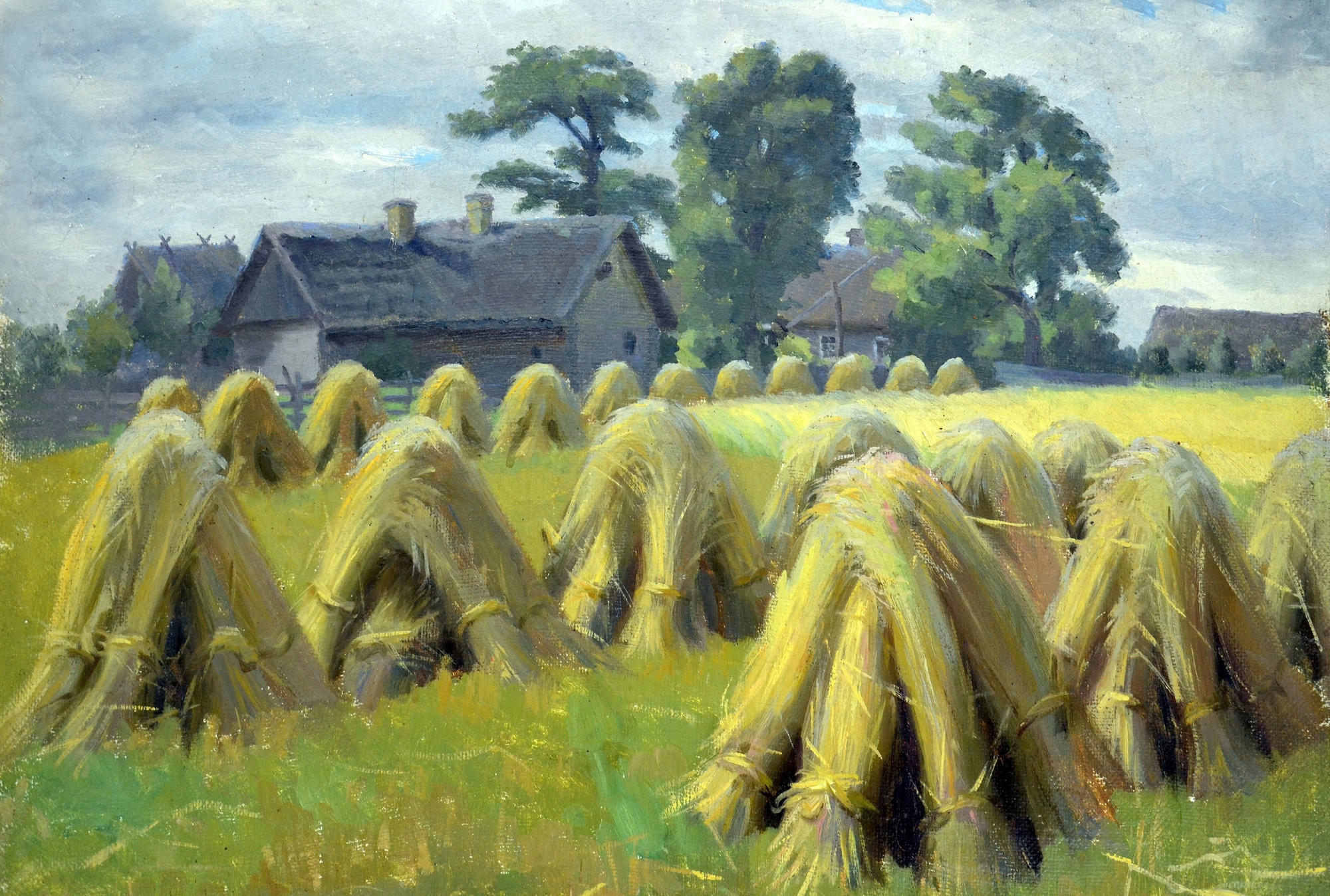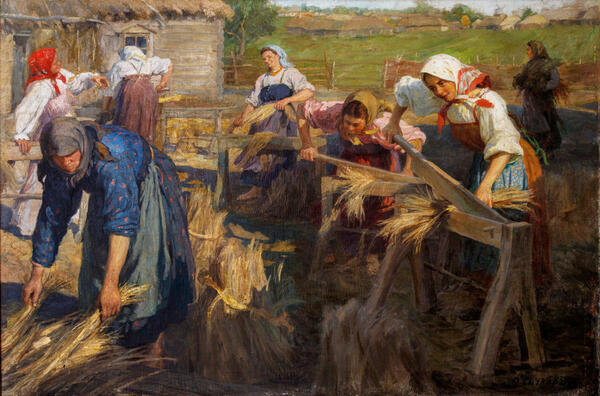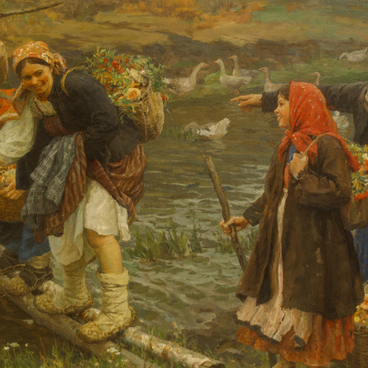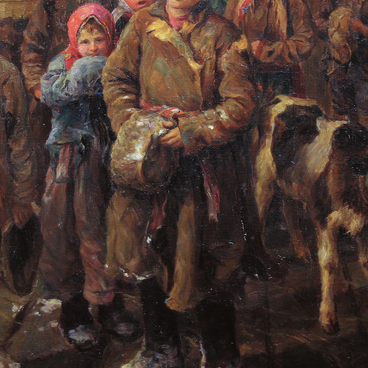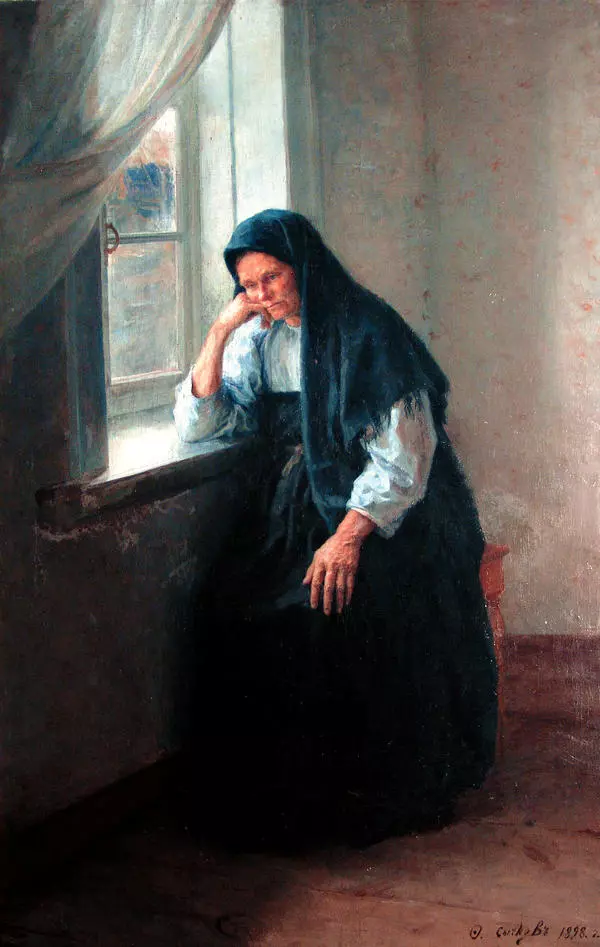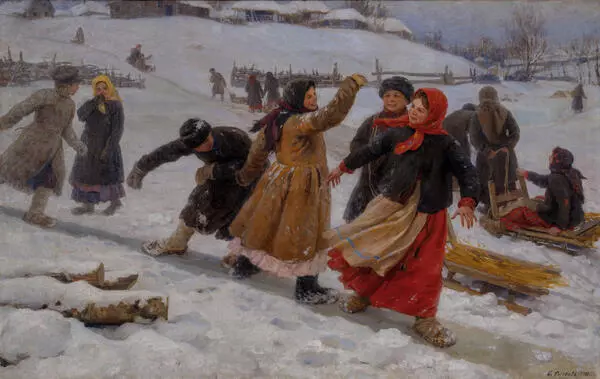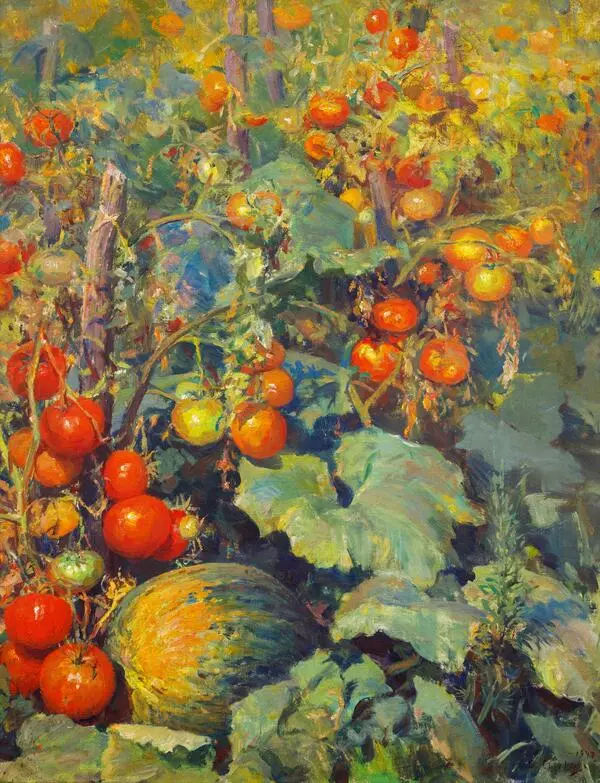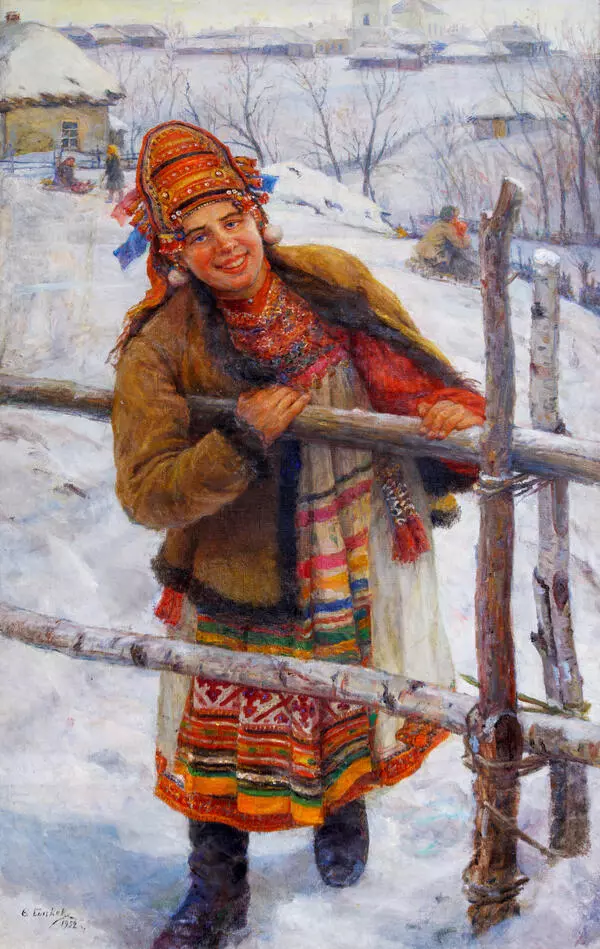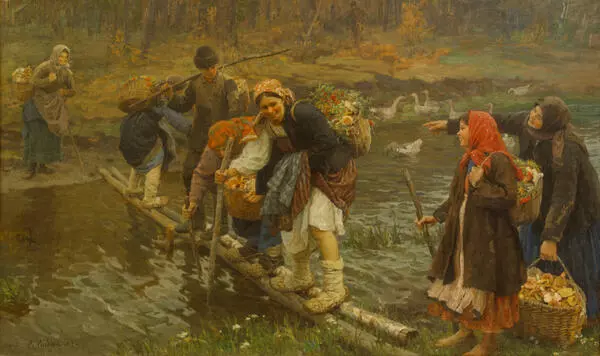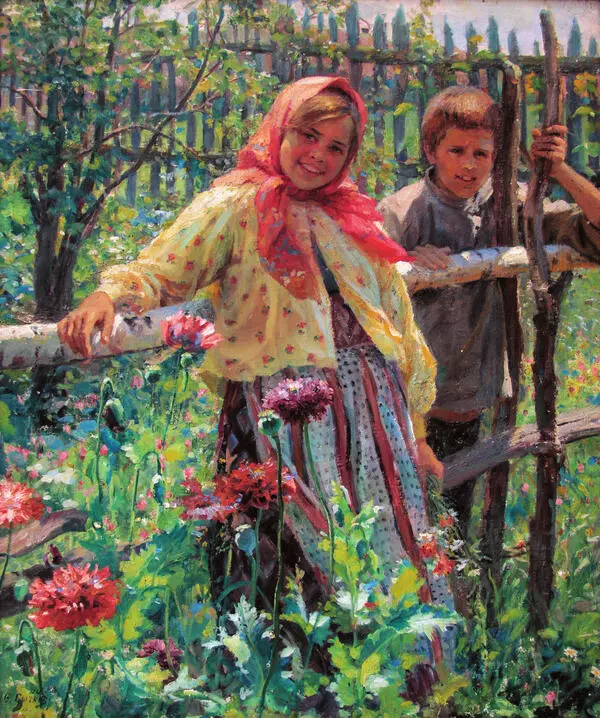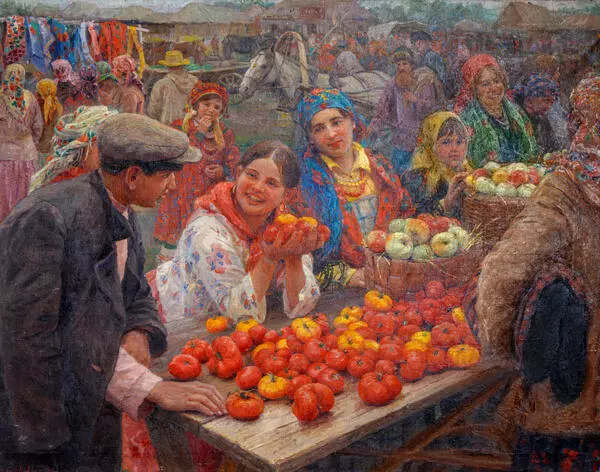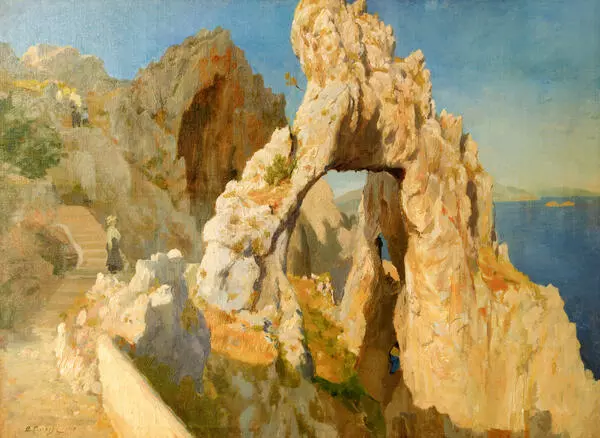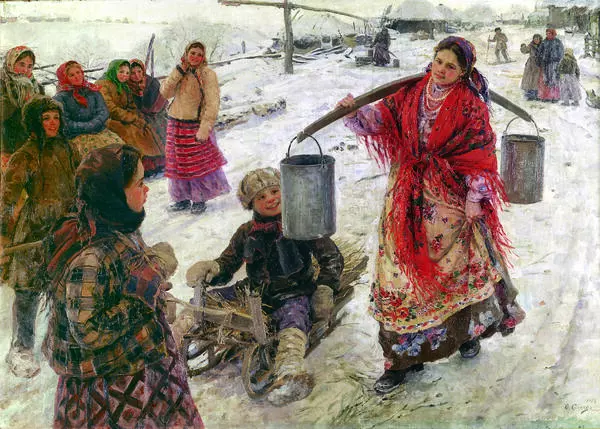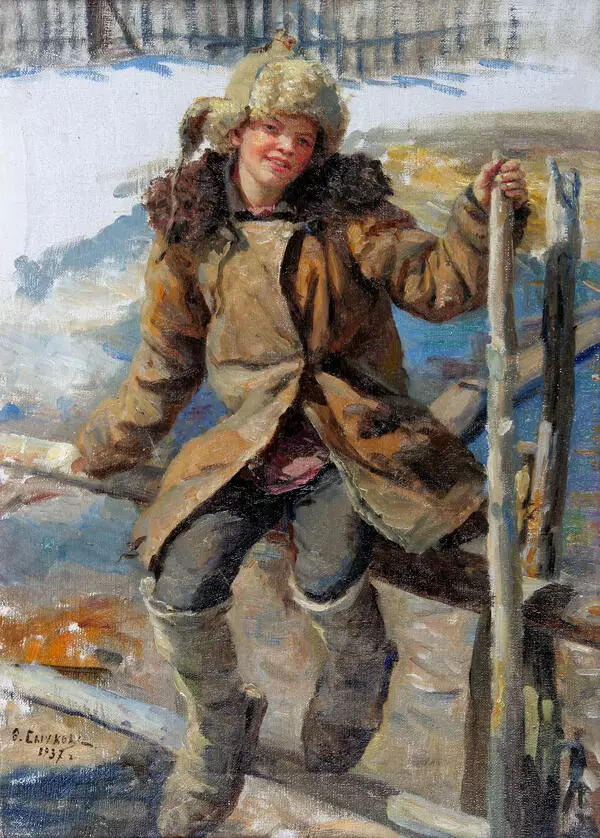In the painting ‘Flax Combers’, the artist painted a scene of the difficult procedure of processing this plant. However, Fedot Sychkov did not focus on the exhausting work of peasant women: he showed this activity as one of the events in the village that unites the local people.
The artist, who had mastered the use of color techniques, created contrasts of various shades of yellow, blue and navy blue. He also subtly enhanced the overall color scheme with pink, green, and purple overtones. Overtones are reflections of objects, for example, there is a yellow overtone reflected from the hay on the white sleeve of one of the workers. As a rule, artists who painted pictures outdoors used overtones in the shadows and bright spots in the light.
At the turn of the 19th and 20th centuries, many new artistic trends appeared. The artists departed from the classical construction of volumes with light and shadow: they painted pictures with bright black contours, distorted the shapes and colors. The works of Vincent Van Gogh, Paul Cezanne, and Russian avant-garde artists (for example, the Non-objective Art of Kazimir Malevich and Olga Rozanova) impressed the whole world. In the context of this complex era, the art of Fedot Sychkov seems quite traditional.
However, the artist was not confused by the new advancing trends. He firmly believed in the path he had chosen — to become a painter of the Russian village. The artist recalled what the famous writer and historian Vladimir Gilyarovsky had told him at the beginning of his career — that he should paint the people whose life he knew well and to whom he owed everything in his life.
Sychkov lived for a long time in his homeland after finishing his studies in St. Petersburg — it became a source of creative inspiration for him. He created paintings reflecting the everyday aspects of the village life during this period. His own impressions of childhood and youth, associated with the time of poverty and humiliation, taught the artist to feel compassion for the ordinary people and understand the essence of the life of the Russian peasantry.
When the Prize of A. I. Kuindzhi was awarded to artists for the first time at the spring academic exhibition in St. Petersburg in 1905, the painting ‘Flax Combers’ was awarded for the skill of chiaroscuro. Under the terms of the competition, this prize could be awarded to an artist only once in his lifetime. However, Fedot Sychkov received the prize six times in a row.
The artist, who had mastered the use of color techniques, created contrasts of various shades of yellow, blue and navy blue. He also subtly enhanced the overall color scheme with pink, green, and purple overtones. Overtones are reflections of objects, for example, there is a yellow overtone reflected from the hay on the white sleeve of one of the workers. As a rule, artists who painted pictures outdoors used overtones in the shadows and bright spots in the light.
At the turn of the 19th and 20th centuries, many new artistic trends appeared. The artists departed from the classical construction of volumes with light and shadow: they painted pictures with bright black contours, distorted the shapes and colors. The works of Vincent Van Gogh, Paul Cezanne, and Russian avant-garde artists (for example, the Non-objective Art of Kazimir Malevich and Olga Rozanova) impressed the whole world. In the context of this complex era, the art of Fedot Sychkov seems quite traditional.
However, the artist was not confused by the new advancing trends. He firmly believed in the path he had chosen — to become a painter of the Russian village. The artist recalled what the famous writer and historian Vladimir Gilyarovsky had told him at the beginning of his career — that he should paint the people whose life he knew well and to whom he owed everything in his life.
Sychkov lived for a long time in his homeland after finishing his studies in St. Petersburg — it became a source of creative inspiration for him. He created paintings reflecting the everyday aspects of the village life during this period. His own impressions of childhood and youth, associated with the time of poverty and humiliation, taught the artist to feel compassion for the ordinary people and understand the essence of the life of the Russian peasantry.
When the Prize of A. I. Kuindzhi was awarded to artists for the first time at the spring academic exhibition in St. Petersburg in 1905, the painting ‘Flax Combers’ was awarded for the skill of chiaroscuro. Under the terms of the competition, this prize could be awarded to an artist only once in his lifetime. However, Fedot Sychkov received the prize six times in a row.


